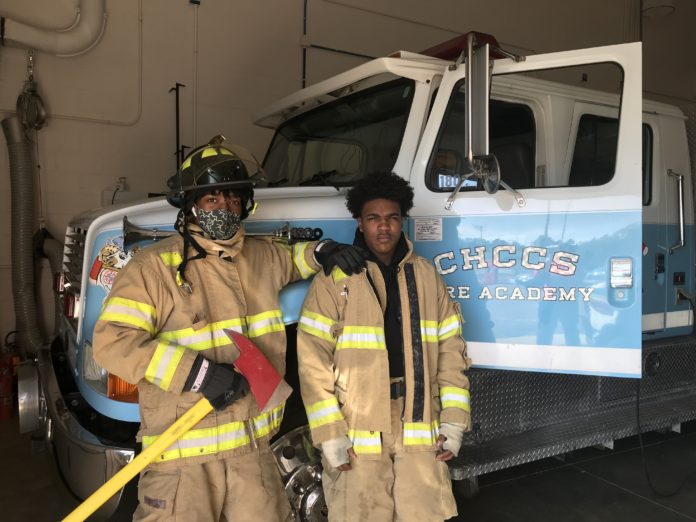
Chapel Hill High School’s firefighting and emergency medical technician (EMT) courses provide a unique hands-on workforce experience for students who plan to continue their work with local fire departments or elsewhere.
Firefighting and EMT instructor Travis Adkison arranges for students in the program to work directly with local fire stations, including those in Carrboro, Chapel Hill, White Cross and New Hope.
The courses are designed to give students more opportunities that do not involve a four-year degree from a college or university.
“The objective of the program is to get somebody fully hired by the time they graduate high school,” Adkison said.
Senior Keshon Thorton started in the program later than most students do, but Adkison said Thornton’s dedication led to his internship with the White Cross Fire Department, located just off NC Highway 54 in Chapel Hill.
Thorton, who is enrolled in the school’s Firefighter Technology II Honors course, said he is motivated not by the honors credit he receives but rather by the practical experience he gains, as well as the enjoyment he finds in firefighting.
“Most of the people there go for the credit,” Thornton said, but the work is “more real and less glamorous” than he anticipated.
“White Cross is more technical with the training and the work,” he said. “It is a very cool environment, but, once you get a call, you get serious.”
Senior Jace Alston, also enrolled in Firefighter Technology II Honors, is also interested in becoming a firefighter after he graduates. Alston said his motivation for enrolling in the program is “helping others, telling other people about firefighting and getting them involved in [firefighting].”
Of the 14 students in the courses in the past few semesters, six have been hired by Chapel Hill fire departments to train and are now working independently.
Students can take semester-long courses starting as sophomores to prepare them to earn certifications in firefighting and EMT services.
Preparations also include classes at Durham Tech, state exams, certifications and hands-on volunteer work with five different local fire stations.
Adkison and Thorton have similar views of what the most difficult part of the program is. Both said nobody will ever be truly prepared for a career in firefighting, though there are ways to make it easier.
“It’s real life. You may see a body. You may see someone die. You’re going to need to be mentally prepared,” Thorton said.
Senior Kaya Arbeeva has also gained pratical experience at the White Cross Fire Department alongside Thornton.
“It’s a lot of hands-on stuff, so you learn how to use equipment,” Arbeeva said.
Adkison also noted that the curriculum, preparation and training students undertake constantly changes. With new technology such as solar panels, the training curriculum for how to handle fire situations necessarily evolves.
The courses are taught in a fully functional garage equipped with all of the fire-prevention materials required, and the program shows students what to expect should they enter the workforce just after high school.
“[The program] really gives the students an idea of ‘Do you really want to do this?’” Adkison said.











